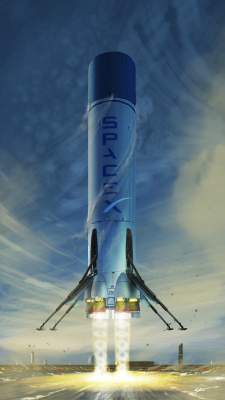In my last post, I talked about the failed attempt of SpaceX to land a rocket booster on a barge. The booster actually came down on the barge but it experienced a crash instead of a soft landing. The hydraulic fluid that powered the steering fins ran out before the attempted landing. Today's rockets deliver their package to orbit but then crash down in the ocean. They can be recovered in some cases and refurbished but it is an expensive and time consuming process. This is the reason that the SpaceX attempt, although a failure, is an important milestone in the exploration of space. Now that commercial firms are moving into space, there is pressure to reduce costs and turn-around time for launches.
An important goal for launching payloads into space is what is called a "single stage to orbit" (SSTO) vehicle. An SSTO would utilize a "reusable launch vehicle" (RLV) that could launch, deliver a payload to orbit and then come back to Earth for a soft landing at the launch site. It could be checked, refueled and launch again in a short time. There is a great deal of research going on to develop such a vehicle.
Launching a single vehicle to orbit with all the fuel on board and a pure rocket engine is not currently possible. The weight of existing launch systems may be ninety percent fuel. The payload that is delivered to orbit may be only two to four percent of the starting weight of the launch vehicle. Currently, the only way to get a payload to orbit is to drop some of the weight in the form of external boosters as the fuel is consumed. This multi-stage design may place the boosters below the orbital craft as with the SpaceX Falcon 9 or strap them to the outside of the main vehicle such as was done with the U.S. Space Shuttle.
SpaceX is a very innovative firm. They have made advancements "in restarting rocket engines, orientation control, guidance and navigation, thermal protection and deploying landing gear." SpaceX has tried three times to test a soft landing. While they may very well achieve a soft landing in the near future, the real question that has to be answered is whether they can cut refurbishing costs and time down to the point where they can be competitive with other launch systems.
In the United Kingdom, they are developing the SABRE rocket engine to power the Skylon SSTO spacecraft. SABRE is a ramjet which captures and compresses atmosphere to supply oxygen to combine with the fuel. When SABRE exits the Earth's atmosphere, it switches over to a pure rocket engine where all the fuel is carried aboard. When it re-enters the atmosphere, it will start up the ramjet mode again and land like an airplane.
The real exploitation of space for commercial purposes will only be possible if we can substantially reduce the cost of delivering a pound of payload to orbit.
Artist's concept of a SpaceX Falcon 9 Recoverable Launch Vehicle:
